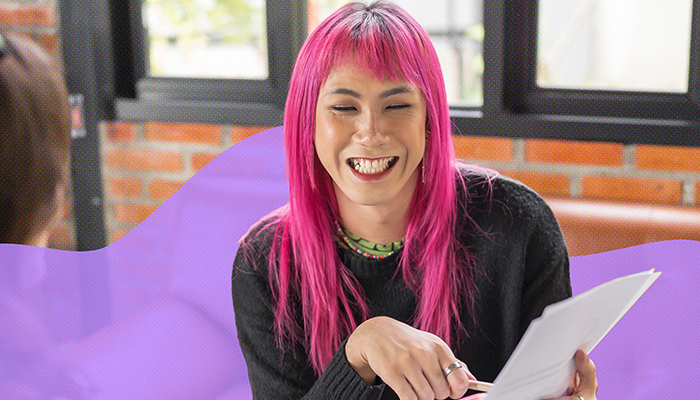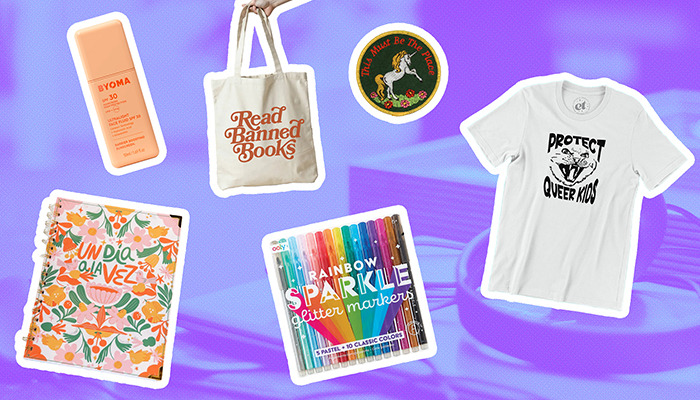We are in the midst of a period of tragedy and failure when it comes to the drug overdose crisis. At an all time high, we lost over 108,000 people to preventable overdose deaths in the United States in 2021 alone.Fentanyl and fentanyl analogues have made their way into the street supply of opioids and stimulants—meth, coke, molly—usually unbeknownst to users and dealers.
Queer and trans people, faced with the intersecting harms of transphobia, homophobia, racism, and ableism, experience statistically higher rates of drug use and overdose. A 2019 article published in the Lancet Psychiatry notes that since LGBTQ+ people experience addiction at higher rates due to several social and systemic causes, they have a disproportionately high risk of drug-related harms. Many of us have been directly impacted by the overdose crisis or know someone who has. Plus, those most targeted and disposed of by the state overall—Black people, sex workers, disabled people, etc.—are often forced to use drugs in risky, criminalized ways.
As this public health crisis becomes more desperate, many have turned to harm reduction approaches to drug use to curb the stream of death in our communities, shifting away from the stigmatizing, punitive, and abstinence-only drug policies that have dominated for decades. Access to information about measures we can take to reduce the risk of overdose, or respond to one that’s already happening, is expanding. To name a few, calls look like “carry Narcan!” , “bad batch alerts” on social media, ''test your drugs” with fentanyl test strips, and “never use alone.”
While all of these interventions have saved countless lives, the crisis persists. We are only being presented with individualized solutions to a collective issue. How can we learn from past prohibitive policies and current movements to combat governments unwilling to prioritize people?
How prohibition leads to toxic drug supplies
Our current drug policies can be traced back to the alcohol prohibition of the 1920s and 30s. Instead of reducing consumption, lack of access to a legal supply of alcohol led to the production of more potent and often toxic booze, which in smaller quantities could be more easily smuggled and concealed from authorities. This “iron law of prohibition” parallels our current overdose epidemic with increasingly potent and toxic drug supply, negative health outcomes, and death spike. This is a predicted result of prohibition policies of the racist war on drugs.
Today, if you’re 21 or older looking for a beer, the range of legal, regulated options is enormous. You can walk into any corner store and buy a bottle labeled with exact potency (alcohol by volume, abbreviated to ABV) and safety warnings. In most situations, we can consume alcohol and not be criminalized for it. The idea of a safe supply, then, is no stranger to us at all.
Shifting towards a safer drug supply
Think about the movement for safe supply as the opposite of prohibition. According to the Canadian Association of People Who Use Drugs, safe supply is “a legal and regulated supply of drugs with mind/body altering properties that traditionally have been accessible only through the illicit [illegal] drug market.”
The movement for safe supply asserts that drug use is normal, not a deviant behavior or act of moral failure.
Most of us, in one way or another, use drugs—whether our mind- or mood-altering substance of choice is caffeine, antidepressants, nicotine, alcohol, sugar, or something else. They help us stay focused at work and/or provide relief from poverty, trauma, chronic pain, mental illness, isolation, and more.
Governments cannot and should not be able to force populations to quit using substances, especially if they aren’t willing to address the reasons why so many people are drawn to using them. Safe supply acknowledges that all people have the right to health, safety, and self-determination.
Death from overdose is not the only risk associated with an unsafe drug supply. Without a safe supply accessible at the pharmacy or elsewhere, someone who is chemically dependent on illicit fentanyl, for example, needs to get well on their own. If they’re poor, homeless, or otherwise marginalized, this can involve participation in risky and underground economies like boosting (theft of retail items to resell for profit) or sex work to come up with the money. It can also look like finding somewhere to use where they won’t be targeted by law enforcement can result in hasty use in unsafe or unsanitary conditions. It is this exact predicament that the ongoing fight to establish safe consumption sites in the U.S., like the new flagship OnPoint NYC in East Harlem, seeks to prevent.
Adulterants besides fentanyl present their own set of risks. In Philadelphia, animal tranquilizer xylazine in the street dope supply has led to spates of painful soft tissue infections and lesions among injection users. Across Canada, benzodiazepines like Xanax in the dope supply have made overdoses harder to reverse and created unexpected chemical interactions and dependencies for unprepared drug users. As people become newly or increasingly disabled through the impacts of adulterants in drugs they've used with relative safety in the past, it's clear how safe supply is also a disability justice issue.
Perhaps most importantly, a legal safe supply reduces the risk of (re)exposure to the criminal (in)justice system, an agent of extreme harm done by the ongoing racist war on drugs. In this way, safe supply is, at its core, an abolitionist issue.
The movement in action
The Canadian government has instituted a legal drug prescription program they call “safe supply.” However, while some prescription fentanyl is available, the program doesn’t provide heroin, cocaine, methamphetamine, or other frequently used drugs, nor do they provide adequate potencies or amounts, This, alongside the scarcity of willing prescribers, leaves many to rely on street supply. This does not meet the needs of most drug users, and it threatens to co-opt the movement for a true safe supply.
The Drug User Liberation Front of Vancouver (based in British Columbia) presents a counter-approach, taking safe supply into their own hands by distributing free, tested small amounts of cocaine, heroin, and meth until supplies run out (see also proposed compassion clubs). However, this grassroots direct action strategy is an insufficient and unsustainable solution. DULF has to fundraise to purchase the drugs (illegally), then must test, portion, and distribute the bags, all as a small and underfunded organization. Though impactful, the doses they provide don’t last long for most people and the quantities are far lower than could ever meet the needs of Vancouver’s drug-using population.
Ultimately, the vision of the safe supply movement is much bigger than the present day examples we have. Safe supply requires the full drug decriminalization as well as the legalization of all substances. Imagine a world where people have access to the basic things they need to stay safe, healthy, and in control of their lives. With this vision in mind, the fight for safe supply continues.
Further resources
- NEXT Distro: find naloxone access where you are
- Drug Policy Alliance: brief history of the drug war
- Crackdown podcast: interview with members of DULF on safe supply distribution direct actions
- VICE News: Benzo Dope and Tranq: The Next Wave of the Overdose Crisis
- CATO: "Four Decades and Counting: The Continued Failure of the War on Drugs"
- Filter Mag: "Vancouver Safe Supply Program Begins Prescribing Take-Home Fentanyl"
FOLX clinicians embrace a harm reduction framework. FOLX members with questions related to harm reduction are encouraged to schedule a meeting time with their clinician.
__
FOLX Health is the first digital healthcare company designed by and for the LGBTQIA+ community. Our services include virtual primary care, gender-affirming hormone therapy including estrogen and testosterone (HRT), mental health care, sexual and reproductive health care, preventive care, and fertility consultations. FOLX memberships give you access to LGBTQIA+ expert clinicians, peer support, thousands of LGBTQIA+ resources, and more. Whether you’re lesbian, gay, bisexual, transgender, queer, gender non-conforming, or nonbinary, you can find LGBTQIA+-specialized health care that helps you meet your wellness goals. FOLX Health is health care that's queer all year. Get all the benefits of becoming a FOLX member and sign up today!



